Manage Permission Roles –>Employee Self Service –>Permission –>ESS Effective dated entries


Permission –> Employee Data
An Unique Journey on Success Factors….
Following are the sequence of steps to Implement EC
1.Setting Up a New Account in Provisioning
2.Creating the Super Admin
3.Defining the Corporate Data Model
4.Defining the Country/Region-Specific Corporate Data Model
5.Setting up MDF Foundation Objects
6.Configuring the Succession Data Model
7.Configuring the Country/Region-Specific Succession Data Models
8.Importing the Picklist
9.Creating Foundation Objects
Optional – Configuring Position Management
10.Configuring Business Rules
11.Creating Event-Reason Derivation Rules
12.Creating Workflow Derivation Rules
12a.Setting Role-Based Permissions (RBP)
14.Importing Employee Data
15.HRIS Sync
16.Setting up Leave of Absence
Optional-Setting Up Payment Information
Optional: Setting Up People Profile
BCUI is enabled as below and in permission manage business Configuration section.
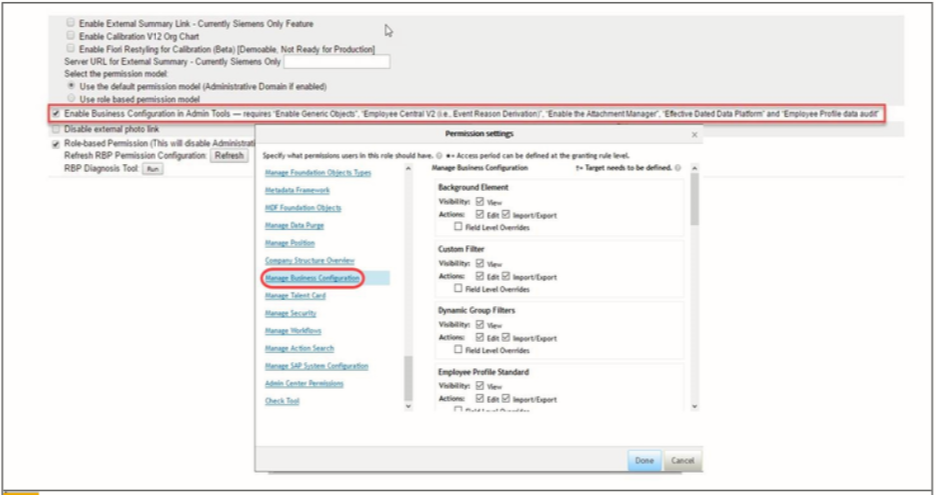
This permission role should have permissions to Meta Data Frame work section as well.
HRIS Element in Succession Data model helps in configuring data file of an Employee.
E.G. If we need to make a filed ‘Required’
We can modify the a. Visibility b. If The filed is Required c. Label of the Field.
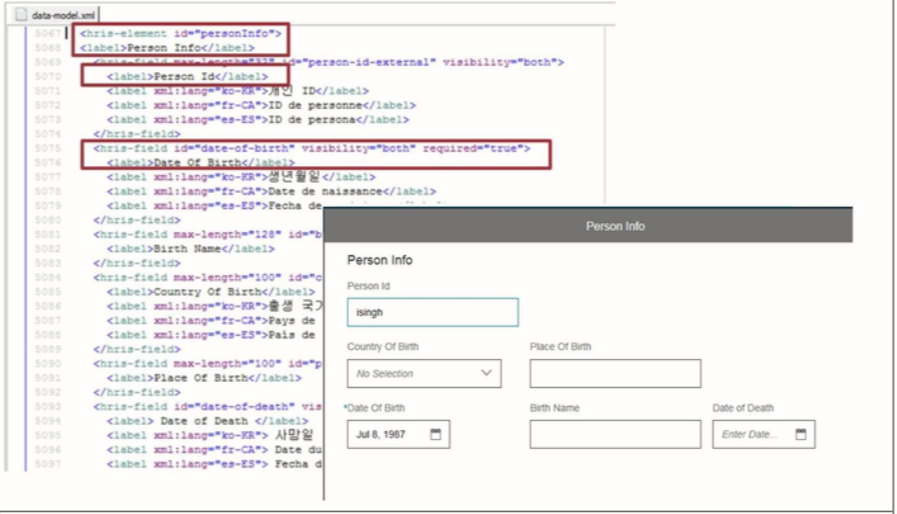
We can restrict the portions of Data Imports as below.
We can restrict :
a. Employee Central Import Entities
b. Job History
c. Comp Info
d. Non Recurring pay components.
e. Job Relationship
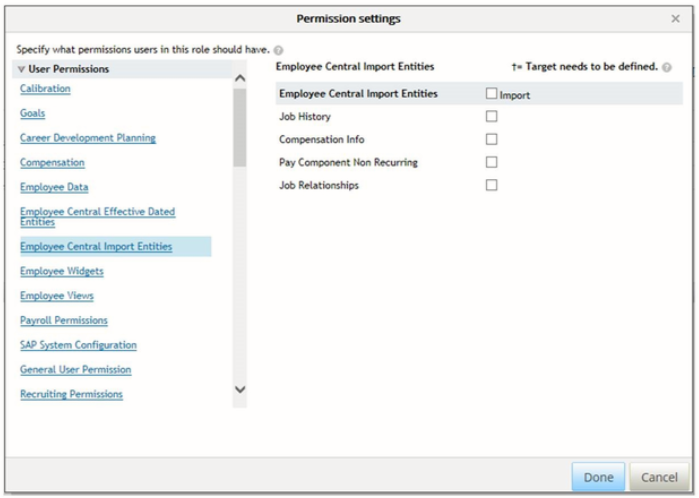
EC has Options to enable Concurrent Employment.
If the Employee has two Employment, the Employee will have two user id and user names.
How to configure Concurrent Employment?
a. Enable this in Manage Employee Central Settings
Note : Required RBP is needed
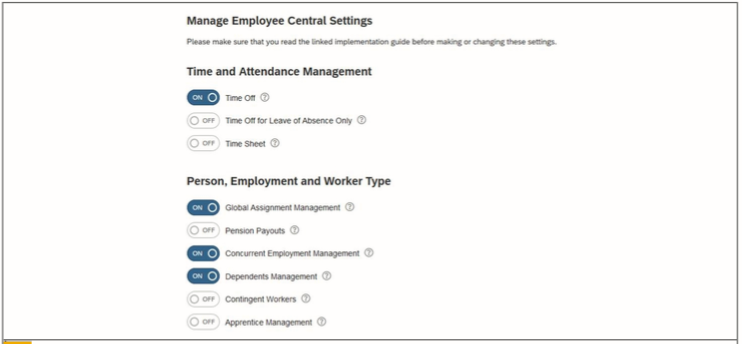
2. As per the picture below
a. Choose “Take Action”
b. Add: Concurrent Employment; Here we must specify which which Job classification is the Primary Employment.
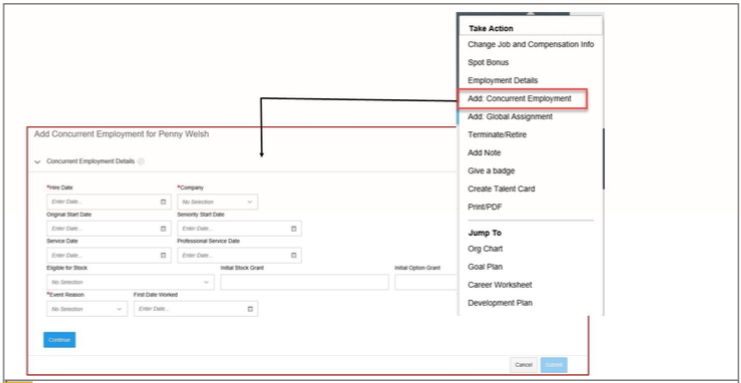
Once the New Employment is saved, a switcher will be available for switching Between different Employments. We can edit and end the Concurrent Employment at any time.
What details are stored in Personal Info and Employment info?
Personal Information:
Following details are stored in Personal Information
a.Legal Name
b. National ID
c. Email Address
d. Physical Address
e. Birth-date
f.Citizenship
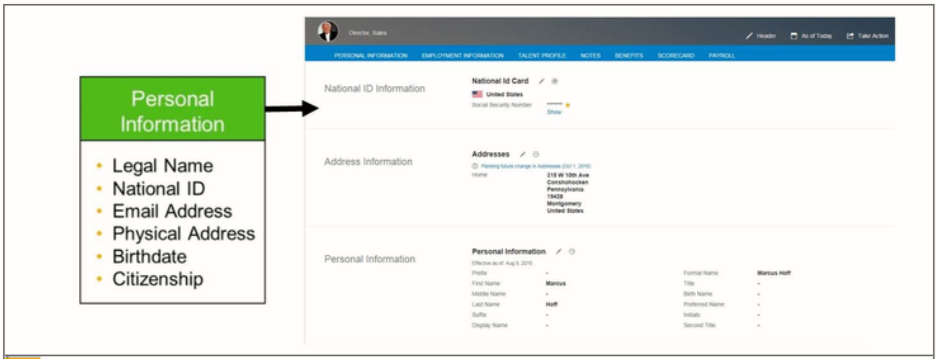
Employment Information:
Following details are stored in Employment Information
a. Business Unit
b. Location
c. Division
d. Job Title
e. Hire Date
f. Compensation
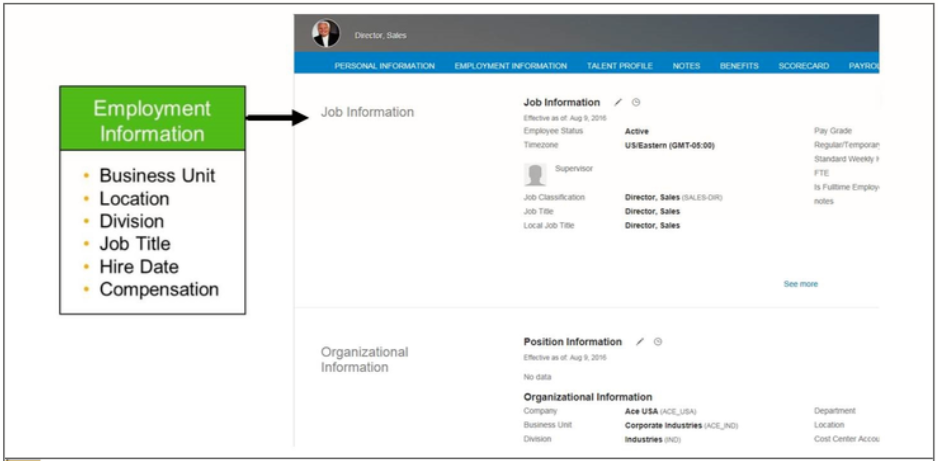
What are the foundation objects there in EC?
What are the different types of FOs are there in EC? : There are 3 Types of FOs. a. Standard b. Custom c. Country specific
What are Relationships between Foundation Objects : Its called association.
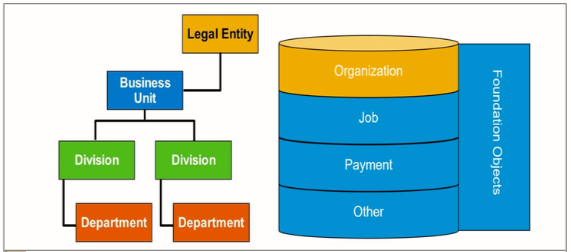
Foundation Objects are in the following Order : Legal entity–>BU–>Division–>Department.
Legal Entity FO:
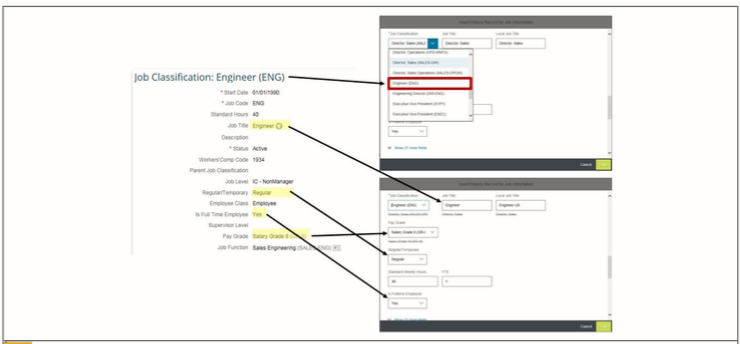
Legal entity uses :
a. Business address
b. Pay range
c. Different Payroll Information( E.g. US Pay Data to be sent to ADP)
What is RBP Mainly?
What specific components its has?
RBP or Role based permission has mainly 3 components.
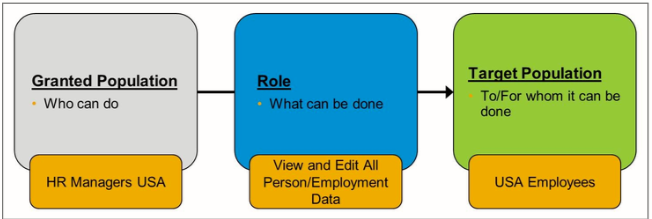
Often we wonder, whats the difference between Provisioning and Admin Center in EC?
What We can do In Provisioning and its for whom?
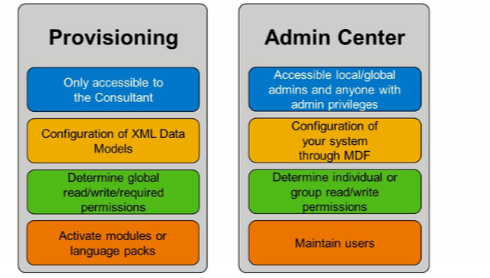
2.
In Provisioning we configure through where as
In Admin center we use MDF.
3.
In Provisioning, Global Read/write permission is required where as in
Admin Center we need individual /Group Read/write Permission
4.
We can activate modules in Provisioning where as
in Admin center we can maintain users.
Recent Comments